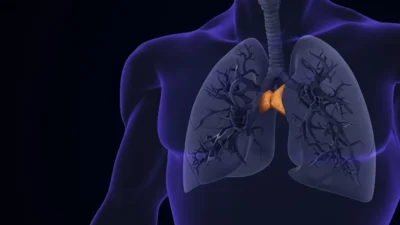No other human endeavor today holds more promise than understanding and targeting aging. The molecular mechanisms that drive aging impact overall vigor, environmental stress resistance, reproductive health, and broad disease risk, and they fundamentally change what life means by radically changing our relationship to death. Intriguingly, aging mechanisms are highly evolutionarily conserved, so much so that the same subcellular changes that drive aging in single-celled organisms and small animals also drive aging in larger mammals, including companion pets and humans. Truly, from applications to beneficiaries, the potential of targeting aging to transform life is vast.
Seeking to realize the promise of longevity technologies (defined here as any intervention that extends healthy organismal lifespan), longevity biotechnology (LongBio) has continued to mature over the last 10 years.
LongBio’s focus has largely centered on its biopharmaceutical applications. Indeed, many people have even ventured to assert that biopharmaceutical applications define longevity biotechnology itself [1]. Biopharma LongBio has understandably led the charge, as the need for new disease treatments is great, and geroscience theory makes a compelling case that aging targets overlap with myriad disease states.
However, longevity biotech applications are not limited to treating disease; they hold the key to a radical transformation in industries far beyond healthcare.
The foundational science behind longevity is simple: maintaining and extending the healthy function of biological systems. Yet, outside of applications into current medical practice, the potential of longevity biotech remains vastly underexplored. From conservation biology to space travel, the ability to preserve, optimize, and extend the vitality of living organisms is an untapped goldmine.
Expanding the scope of longevity biotechnology
Dietary supplements and consumer products
Products marketed as “anti-aging” existed well before LongBio. The major challenge with consumer-ready LongBio products is the same with any other product: does it work as claimed? With no regulatory body that assesses non-clinical product claims and the morass around treating longevity/aging as an FDA-approved indication, quality assurance across consumer LongBio products is left to the manufacturer. Interestingly, the dominance of biopharma LongBio and the lack of clarity around aging as an indication have set the stage for consumer LongBio groups becoming best positioned to truly move our understanding of longevity technologies forward.
To find something, the most obvious strategy is to directly look for it. This is true for longevity technologies. However, the target-based reductionism prevalent in biopharma drug development has created a situation where, instead of directly measuring extended lifespan (the gold standard analysis for a longevity technology), longevity technologies are called such based on whether they modify a known “Hallmark of Aging” [2].
At its most extreme, biopharma LongBio is fundamentally misaligned to assessing whether an intervention extends healthy lifespan. For biopharma LongBio, disease indications are the focus, not longevity. Consumer LongBio products, on the other hand, are focused on directly extending healthy lifespan. This creates a major opportunity for these groups to validate longevity technologies by directly measuring healthy lifespan.
A major unmet need in this space is an unbiased, third-party system to evaluate longevity claims made by consumer LongBio products. Elevating standards of quality and supporting companies’ scientific efforts by choosing their products will create alignment and lead to better longevity technologies being developed faster.
Biomarkers and precision longevity
Along with effective longevity technologies, biomarkers that predict successful extended healthy lifespan are the biggest unmet need in LongBio. Today’s biomarkers, most prominently the numerous “clocks” in the consumer marketplace, have questionable use beyond serving as entertainment products.
Advancements in longevity biomarkers can refine personalized medicine by predicting disease risk, optimizing interventions, and even guiding lifestyle choices based on real-time biological data. In a commercial sense, longevity-focused biomarker technology could create a new wave of diagnostics, health optimization services, and AI-driven longevity coaching.
Reproductive health
The connection between reproductive health and longevity is becoming clearer, opening doors for new fertility-enhancing treatments that also promote long-term vitality. Longevity biotech could support extended reproductive windows, healthier pregnancies, and delayed reproductive aging, creating opportunities in both clinical and consumer health markets.
Veterinary and pet longevity
Veterinary medicine is already seeing interest in longevity applications for pets, but why stop there? A broader application of these technologies could enhance the health and lifespan of pets outside of veterinary care. The pet care industry alone, valued at over $200 billion globally, is primed for disruption through longevity-driven innovations.
Longevity in unexplored commercial frontiers
Conservation biology & remediation
Longevity technologies could revolutionize conservation efforts by extending the lifespans and/or reproductive viability of endangered and threatened species. A longer-lived, healthier wildlife population could improve biodiversity conservation, making longevity biotech a potential tool in ecosystem restoration.
Completely overlooked as of now is how improved healthy lifespan and stress resistance could improve the function of organisms that perform bioremediation and carbon fixing. Longevity technologies may also provide benefit in the context of environmental mitigation, which seeks to offset environmental and ecological damage produced during real estate and other development. Combined, remediation, environmental mitigation, and carbon markets have a combined market size of over $1 trillion.
Agriculture & food security
Healthier, longer-living crops and livestock could transform agriculture, reducing losses due to disease and environmental stress while increasing yield stability. Longevity technologies could enhance plant resilience, while longevity-focused veterinary applications could improve livestock productivity, addressing both economic and ethical concerns in food production.
Military performance & readiness
Servicemember readiness, retention, and performance are all priorities for leaders across the Department of Defense. Longevity biotech offers unprecedented potential for improving soldier performance, recovery, and retention. Enhancing cellular resilience, injury recovery, and cognitive longevity could create a new era of soldier optimization: one where extended healthspans mean fewer medical discharges and greater operational readiness. The military has always been a driver of cutting-edge biotech, and LongBio should be no exception.
Space medicine & interstellar longevity
Human space travel is limited by biological aging, radiation exposure, and long-term health deterioration. Longevity biotechnologies could mitigate these risks by promoting cellular repair, bolstering immune resilience, and extending astronaut viability for deep-space missions. As commercial space travel expands, so too will the demand for longevity-focused space medicine solutions.
Industrial & environmental applications
Any system reliant on biological organisms—whether it be wastewater treatment using microbial life or bio-based manufacturing—stands to benefit from longevity advancements. Healthier, longer-lived microbes, plants, and engineered biological systems could drive new efficiencies in bioindustrial processes.
The next commercial revolution
The potential of longevity biotechnology extends far beyond personal health and wellness; it is a foundational tool for any industry that relies on the health of living systems. The next wave of biotech-driven commercialization will not just be about treating disease but about optimizing the very biology of life itself. As we expand our understanding of aging and cellular health, we will uncover new markets, drive unprecedented innovation, and reshape industries that have yet to recognize the longevity revolution knocking at their door.
The question isn’t whether longevity biotechnology will expand into new industries—it’s how quickly we’ll seize the opportunity.
Literature
[1] Boekstein, N. et al. Defining a longevity biotechnology company. Nature Biotechnology 41, 1053-1055 (2023).
[2] López-Otín, C., Blasco, M. A., Partridge, L., Serrano, M. & Kroemer, G. Hallmarks of aging: An expanding universe. Cell 186, 243-278 (2023).








